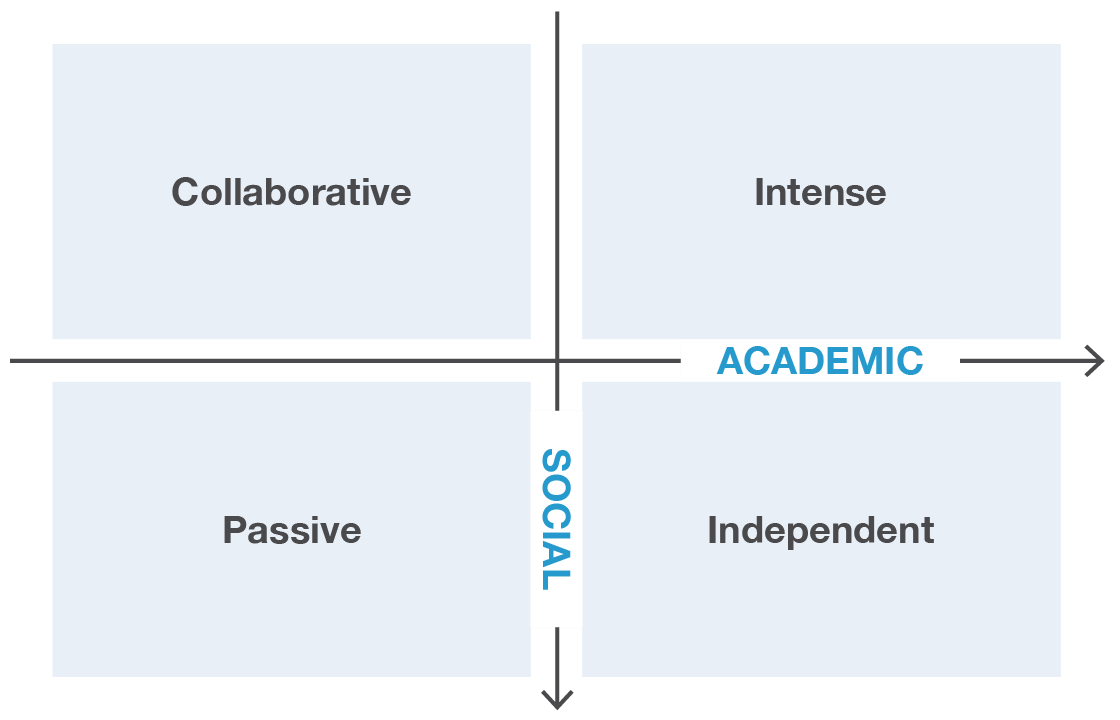Types of Student Engagement
Dr. Hamish Coates, an expert in learner engagement, characterized four styles of student engagement: collaborative, intense, passive, and independent. These styles exist along two axes: academic and social. Faculty, staff and administration can benefit from understanding these types of engagement as they can inform the nature of the of practices they might want to implement within their class or program.
1
Intense engagement may look like high involvement in academic realms as well as social realms equally.
2
Independent engagement styles are characterized by more academic and less socially oriented approaches.
3
Collaborative engagement styles emphasize social aspects of post-secondary life, work, and learning over exclusively academic activities.
4
Passive engagement styles are demonstrated by low involvement within the social and academic approaches.
 Image from Trowler, 2010
Image from Trowler, 2010
It is important to note that these styles are not intended to be seen as student traits but transient characteristics that may arise based on content material, material delivery, student circumstance and
learning styles. For instance, some students may engage in independent engagement styles when learning materials for a course online as they can control how they pace themself and not rely on one another to complete the learning. But for some students this may invoke a passive engagement style as they do not have opportunities to collaborate and may not suit their learning style if they engage better through in-person learning. Burnout and limited time can also contribute to passive engagement within students. Each style has its merit depending on where it is applied to and sometimes may not be correlated with academic performance or wellbeing.

